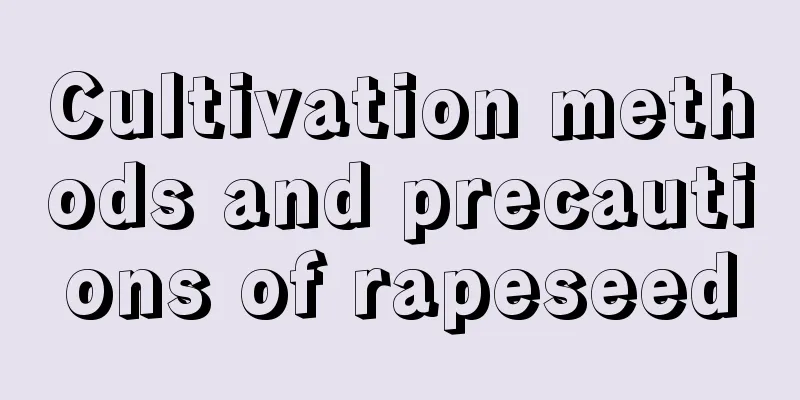Cultivation methods and precautions of rapeseed

1. Maintenance methods1. Soil: Fertile, loose and breathable soil can make it grow better. Generally, sandy soil can be used. 2. Water: It is suitable for growing in an environment with high humidity and heavy rainfall. The soil should be kept moist during the cultivation period and provided with sufficient water so that strong and leafy lettuce can be harvested. 3. Nutrients: Before planting, spread the decomposed organic fertilizer evenly on the soil, and then turn it over and stir it so that the nutrients in the soil can fully volatilize. 4. Light: Sufficient sunlight is needed during the cultivation period, but it is not suitable for direct sunlight. Too strong light will cause sunburn to its stems and leaves. 2. Breeding techniques1. Pruning: During the growth period, the lettuce will have weak seedlings and rotten branches and leaves. At this time, they should be pruned in time to avoid infecting other healthy plants and affecting the absorption of nutrients. 2. Reproduction: Sowing is usually used for reproduction in April and mid-to-early July. Sprinkle the seeds evenly on soil with sufficient nutrients, then sprinkle a layer of fine soil and spray some water to moisten the soil layer. You can see the lettuce growing in about a week. 3. Problem diagnosis and treatment1. Sclerotinia disease: Sclerotinia disease is easy to occur under conditions of poor ventilation and air permeability. Untimely prevention and control will cause the entire plant's leaves to wilt and die. Just spray it with a diluted solution of carbendazim and vitality agent. 2. Aphids: Aphids are a common pest of lettuce. They can cause the leaves of lettuce to curl up and then survive on the curled leaves. If pests are not removed in time, the yield of lettuce will be greatly reduced. Using diluted aphid-resistant pesticide for spraying can have a very good effect. IV. Other issues1. Is it edible? Lettuce is edible because it is a very common vegetable and people grow it for consumption. 2. Can it be exposed to rain: It can be exposed to rain, because it is a plant with high water demand, and sufficient water can make it grow better. However, during heavy rains, the water in the soil must be removed in time. |
<<: Cultivation methods and precautions of tea oil
>>: Cultivation methods and precautions of Jade Lilac
Recommend
Seabuckthorn pruning technology, seabuckthorn shaping and pruning methods
1. Pruning time Sea buckthorn pruning is divided ...
Isatis root planting time and method best planting season
Isatis root planting time Isatis root can be plan...
Corn sowing time and method
Corn is an annual herbaceous plant of the genus Z...
Amaryllis cultivation techniques and precautions
Amaryllis is a bulbous flower with large, colorfu...
What fertilizer is good for Aspidistra
1. Nitrogen Fertilizer During maintenance and man...
Why the cabbage I grow doesn’t curl (what should I do if the cabbage I grow at home is difficult to curl)
If the reason that the cabbage leaves do not curl...
How long does it take for wolfberry cuttings to take root and sprout?
Rooting time of wolfberry cuttings Wolfberry is u...
How to grow Emei rose
1. Maintenance methods 1. Temperature: 15 to 30 d...
How does Epiphyllum survive the winter?
1. Maintain temperature Flowers and plants like E...
What to do if the lucky tree has root rot
1. Causes of root rot ① Too much water: Many novi...
How to use egg shells to grow green radish
1. How to use In daily life, collect the unused e...
How many years does it take for oranges to bear fruit? How long does it take for them to bloom and bear fruit?
Introduction to growing oranges Orange is a relat...
The efficacy and function of five-leaf ginseng
1. Lowering blood lipids Five-leaf ginseng can ef...
How to water camellia
Key points for watering camellia Camellia is a pl...
Watermelon planting methods and management methods
Watermelon is a common fruit in summer. It is ind...









